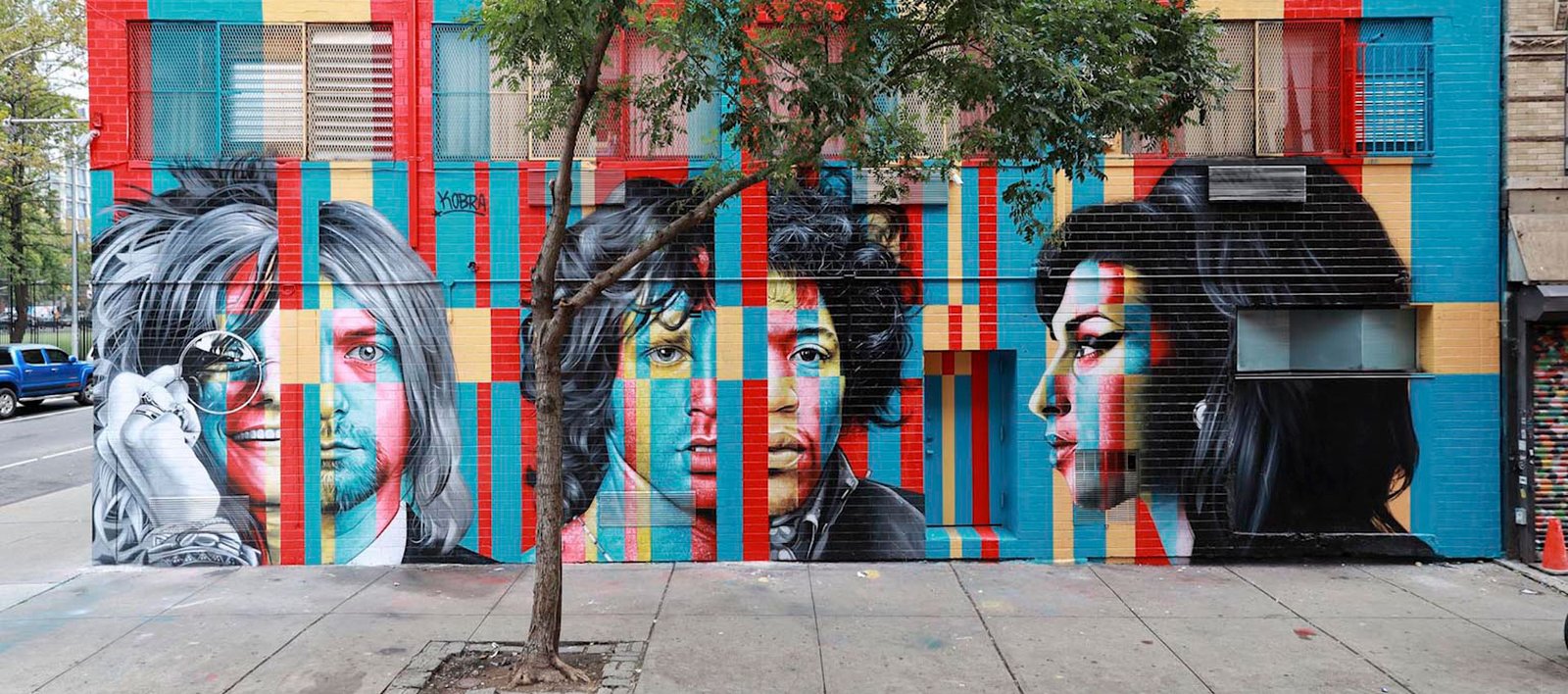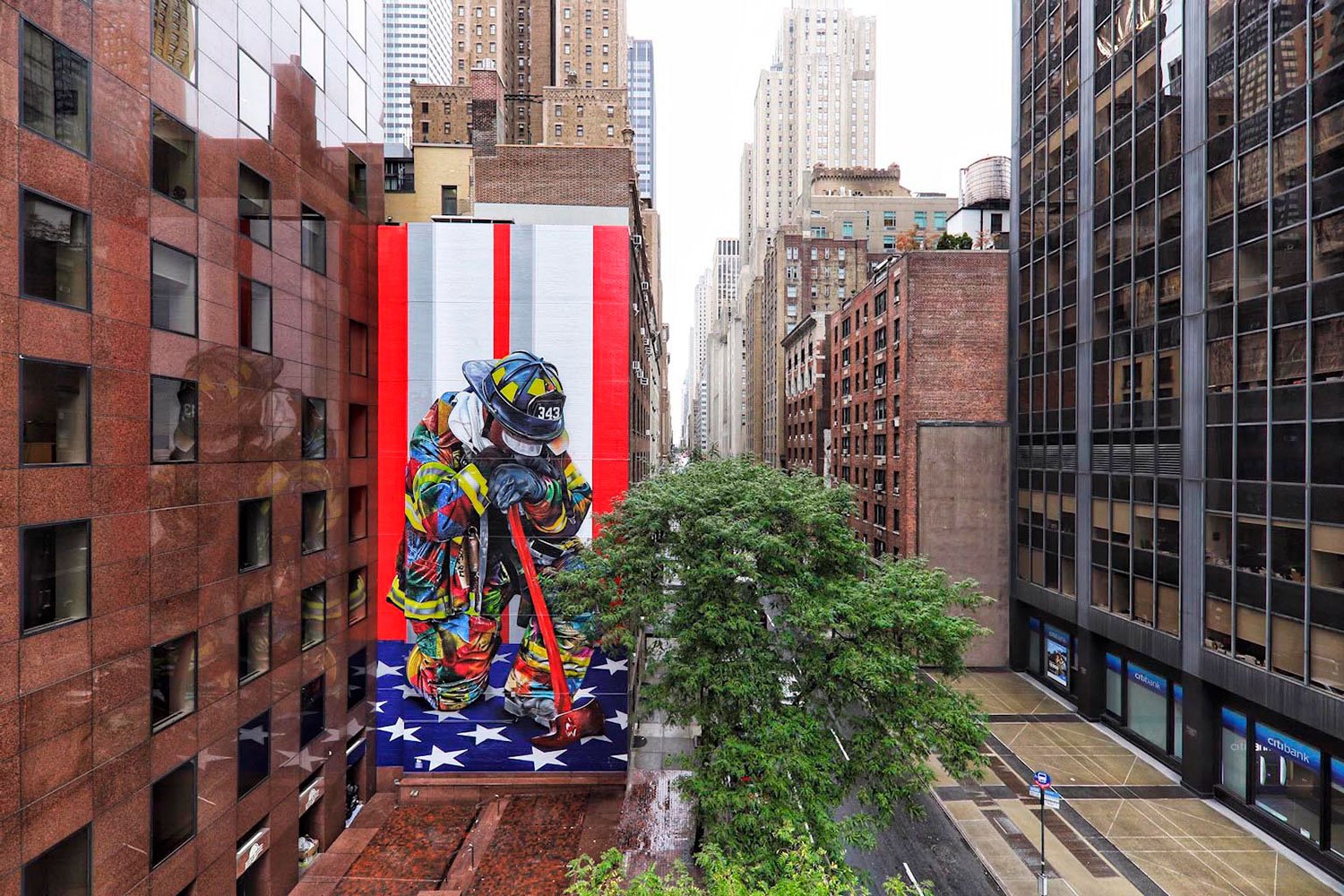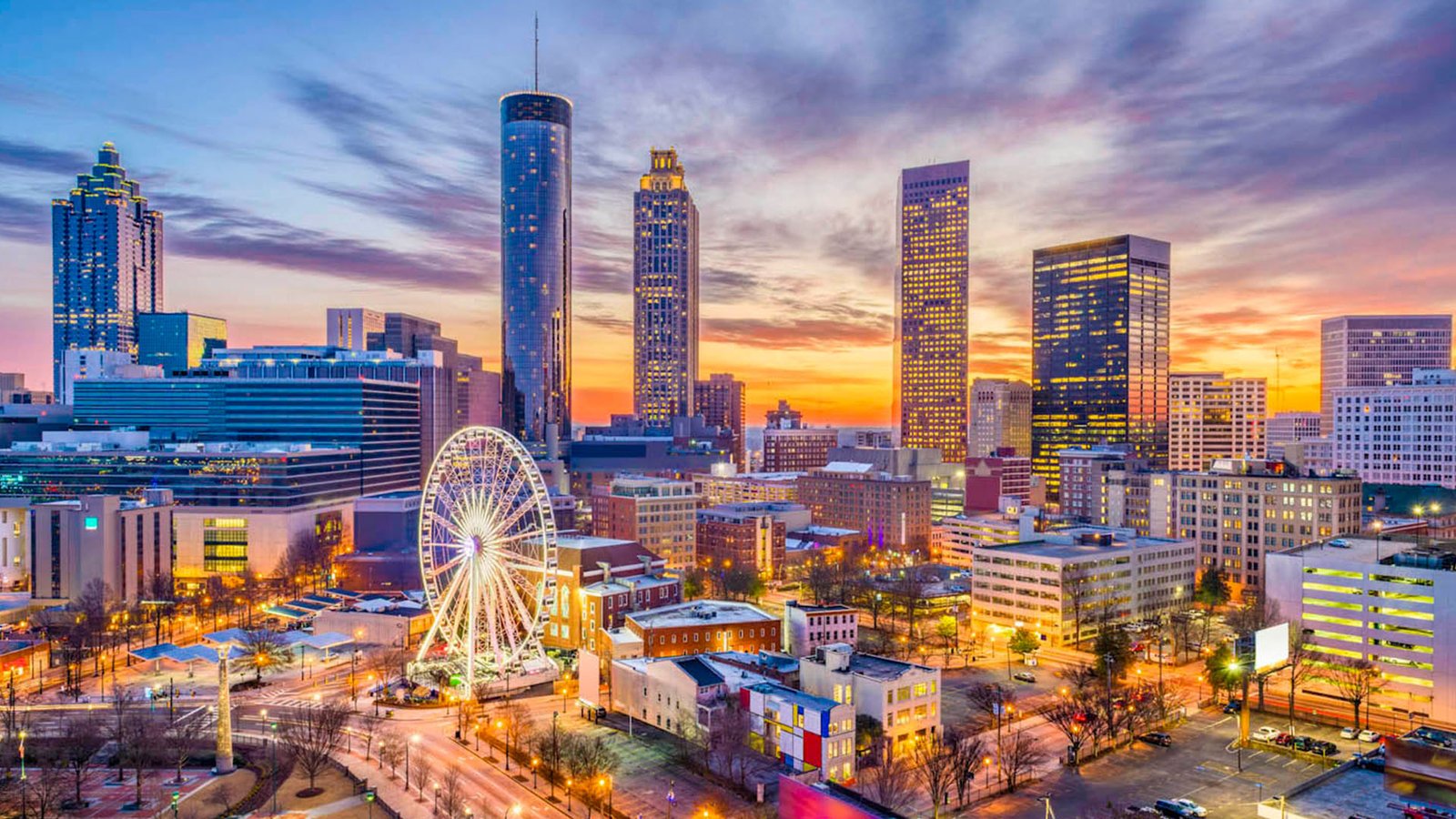
From the Streets to the Galleries: Eduardo Kobra
Kobra went from illegally tagging walls in the streets to international acclaim and respect. He is a sensitive and talented artist with a unique style.
Featured
- He went from reproducing images of old São Paulo to being an admired international muralist with works in twenty countries.
- Kobra has a Guinness World Record for the team work “Etnias”, the largest spray paint mural.
- To celebrate the thirtieth anniversary of his career, Kobra converted a bus into a “Galería Circular” (Itinerant Gallery) exhibiting photos of his works at various places in São Paulo.
By: Ricardo Viveiros (ABCA-AICA)
Photos: Mari Souza, Alan Texeira y otros
Like social media networks, graffiti has become increasingly significant as a way for young people to express criticism. Graffiti spread rapidly during the height of the so-called counterculture in the late 1960s in Europe and the United States. Soon “tags” in the form of letters, words, and phrases morphed into outsize murals. In Brazil graffiti appeared in the mid-1970s, and quickly developed a style of its own. . One of its best-known artists is Eduardo Kobra, presented here in an exclusive interview with Panorama of the Americas.

You went from copying images of old São Paulo to being an admired international muralist, what was the process like?
It was not a quick process, but rather three decades of constant, grueling creative work to reach the stage of lawful mural art done at the invitation of the property owners. . It was natural, spontaneous, and intuitive. I got interested in design and painting at the age of eight. At twelve, I was already defacing walls with paint, and I was detained some three times by the police. As a street artist, I often experienced prejudice and disdain, but that did not stop me from making a name in São Paulo.
I cycled through several urban art movements, from doing illegal “pichaçãos” [lettering that looks like runes, written clandestinely in high, hard-to-reach places, and typical of São Paulo and Río de Janeiro] and spontaneous graffiti to plunging into murals with perspective and old urban scenes in black and white. I went back into previous works, which gradually started to take on the color and vigor of graffiti.

How does your art fit in with the architectural transition in big cities?
In addition to studying technical considerations such as the condition of the structure and the angle of sunlight when planning a project, you need to take into account the city’s historical, social, and cultural aspects.
Do you think the harried pedestrians in cities appreciate and understand your message?
If we understand an urban mural more as a work of the passers-by than of an artist, the work must speak to the beliefs, religions, and thoughts of the people who live with the work. Urban art helps people to slow down, to stop and think. Cities are more than stress and pollution. There are gardens, birds, people, and feelings. I think we are learning to see the world in a different way.
How do you handle the commercial nature of the brands that hire you?
Just like a play, a film, or a musical, an outsize mural needs sponsors. When a brand proposes a project to me, I consider accepting it as long as it respects my ideas and principles and as long as the message is in tune with my creation.

How did you end up in galleries?
I wasn’t looking for it. It’s just something that happened as part of my career path. I was born poor with little access to culture. I had to learn to live with the contrasts. I enjoyed five-star hotels while sleeping on the street to do the work. Sometimes I didn’t have enough money for food when traveling in other countries. At other times, it was difficult to buy paint. But since art is my life, I will continue to paint and to climb scaffolds for oversize murals as long as my legs hold up.





Leave a Reply